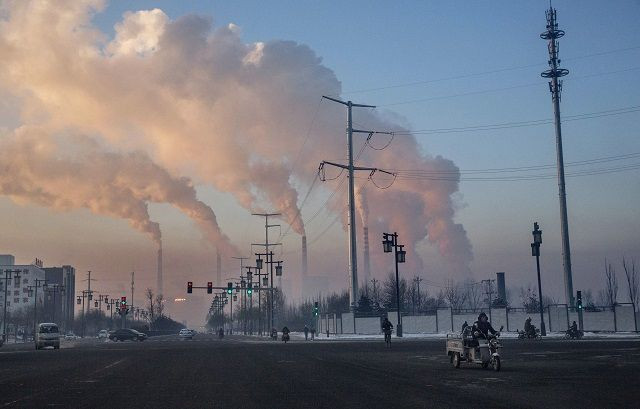Do Trees Around Factories Help Curb Air Pollution?

Restoring natural land cover where possible might be a key strategy to improving air quality and fighting pollution, especially in pollution-wracked locations such as factories, industrial sites and coal-fired power plants.
Various studies have shown existing natural areas in the U.S. such as forests, grasslands and shrubland vegetation are already responsible for mitigating a significant portion of U.S. air pollution. The best thing humans can do now is to help Mother Nature do this job better. But how?
A study published in the journal Environmental Science & Technology acknowledges nature-based solutions can compete with technology to reduce toxic air emissions across the U.S.
By mitigating air pollution, trees and other plants can help save human lives across the planet by limiting the spread of toxic air pollution, which remains a leading cause of death worldwide.
Over nine million premature deaths were caused by air pollution in 2015, which is 16 percent of deaths worldwide, according to a study published in the peer-reviewed medical journal, The Lancet. These total deaths are "three times more deaths than from AIDS, tuberculosis and malaria combined, and 15 times more than from all wars and other forms of violence."
Data shows how we can best help Mother Nature in her unceasing fight against air pollution. Restoring natural areas to county-level average canopy cover could reduce air pollution by an average of 27 percent, according to data compiled by researchers from The Ohio State University. In addition, nature-based solutions in 75 percent of counties wound up being far less expensive in mitigating pollution compared to technological interventions such as complex smokestack scrubbers.
"The fact is that traditionally, especially as engineers, we don't think about nature; we just focus on putting technology into everything," Bhavik Bakshi, study lead study author and professor of chemical and biomolecular engineering at The Ohio State University, said.
"And so, one key finding is that we need to start looking at nature and learning from it and respecting it. There are win-win opportunities if we do — opportunities that are potentially cheaper and better environmentally."
Maintaining current levels of vegetation along with restoring vegetation cover in industrial areas will help reduce some of the most common types of air pollutants. These pollutants include sulfur dioxide (SO2), nitrogen dioxide (NO2) and particulate matter (PM).
Sulfur dioxide is a severe irritant. It attacks the eyes, respiratory tract, mucous membranes and skin. Exposure to high doses of SO2 can cause pulmonary edema, bronchial inflammation, and laryngospasm and edema with possible airway obstruction.
Nitrogen dioxide inflames the lining of the lungs and can reduce immunity to lung infections. Inhalation can result in heart failure and sometimes death in severe cases. High levels of nitrogen dioxide will severely affect people with asthma because it can cause more frequent and more intense attacks.
Urban and rural areas stand to benefit from ecosystem-based approaches to combating air pollution, as per the study.
"This suggests that even though vegetation cannot fully negate the impact of emissions at all times, policies encouraging ecosystems as control measures in addition to technological solutions may promote large investments in ecological restoration and provide several societal benefits," the study noted."




























